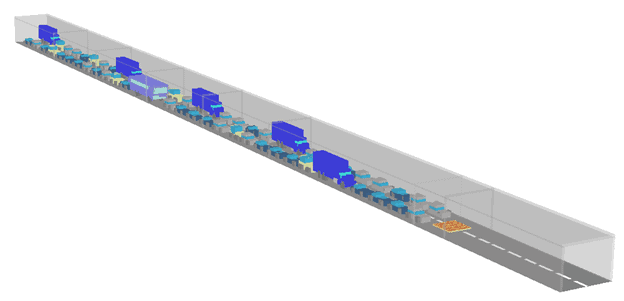Tunnels Ventilation and Aerodynamics Analysis
The provision of adequate ventilation is a key factor in the design of complex transport systems, road tunnels and rail tunnels.
We use state of the art simulation tools. For one-dimensional analysis, depending on the complexity and purpose of the same, we use SES (Subway Environmental Simulation), IDA-Tunnel, Cammatt, powerful modelling tools for numerical analysis of the aero-thermodynamic environment in subway transit networks.
For locations with a complex geometry CFD (Computational Fluid Dynamics) is used, specifically where airflow behavior is complicated and deemed to be three-dimensional. CFD enables the analysis of fluids in a 3-D domain, including heat transfer, mass transfer, and chemical reaction.
For road tunnels we have developed all types of ventilation systems, including, transverse, semi-transverse, longitudinal and natural ventilation. We have a detailed knowledge of the different international standards relating to road tunnel ventilation (e.g. NFPA, RABT and PIARC). We would also take local features, which may have an important bearing on the relevance of these standards, into account. This could for example be a high proportion of high-emission vehicles or the danger of a particularly large potential fire load (a very severe fire scenario).














